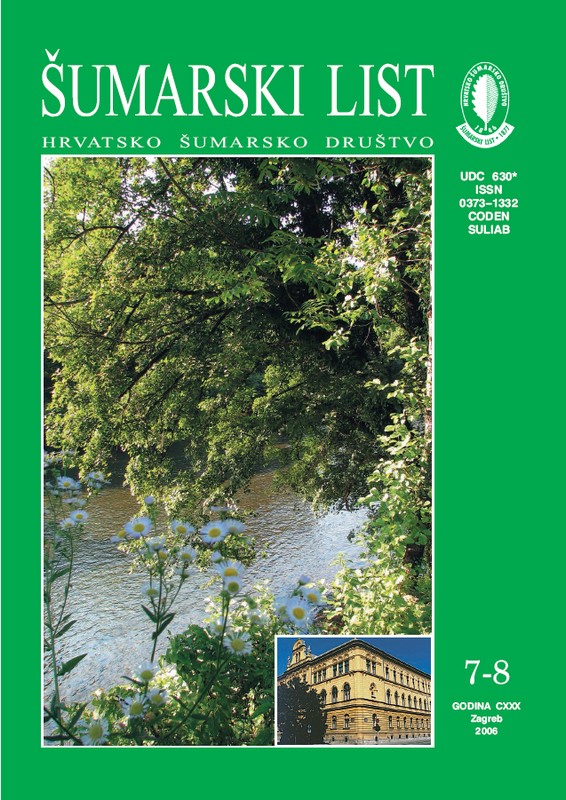| |
| IZVORNI ZNANSTVENI ČLANCI |
| |
|
|
| Ballian, Dalibor | UDK 630* 165 (001) |
| Controlling the Serbian Spruce Origin (Picea Omorika /Panč./ Purk.) at the Kakanj Plantation with Isoenzyme Markers
pdf
HR
EN
|
295 |
| Kremer, Dario | UDK 630* 164 + 233 (001) |
| Morphological Differences Between White Ash (Fraxinus americana L.) and Green Ash (F. pennsylvanica Marshall) Introduced in Croatia
pdf
HR
EN
|
305 |
Summary: Two North American ash species, white ash (Fraxinus americana L.) and green ash (F. pennsylvanica Marshall), were introduced in Croatia in nineteenth century such as ornamental trees and for afforestation lowlands. Because of their similar morphological traits, F. americana and F. pennsylvanica are not distinguished in practice and they are known under one name – “American ash”. Today “American ash” is among the most widespread exotic species in lowland forests in Croatia, especially in Danube basin and in lower part of Drava River Basin. Like pioneer species “American ash” has great meliorization role in preparing habitats for the arrival of the native ash species. Because of its meliorization role and spontaneous spreading in lowlands it could be useful for experts to get to know morphological, ecological and management characteristics of “American ash”. It is important because the white ash and the green ash grow in different ecological conditions, and they request something different management. White ash is adapted to mesophytic forests and the best grow on moist sites without stagnant flooding water. Green ash is the species of disturbed habits, endures flooding and commonly grows beside the swamps and marshes, often with roots in water. On those places there is no strong competition of the other species. White ash and green ash are clearly distinguished according to presence of microscopy tiny wax papillae on the lower epidermal cells of leaves of white ash. The papillae are developed in the age of three to five. The younger plants (seedlings) of white ash are distinguished from the green ash plants according to presence of numerous hairs on leaf margins.
Key words: afforestation; lowland forests; pioneering species |
| Prka, Marinko | UDK 630* 321 + 325 (001) |
| Features of Assigned Beech Trees According to the Type of Felling in the Felling Areas of Bjelovarska Bilogora and their Influence on the Assortment Structure
pdf
HR
EN
|
319 |
| |
| PREGLEDNI ČLANCI |
| |
|
|
| Zelić, Juraj | UDK 630* 521 + 522 + 531 |
| Do Trees in a Forest Grow by the Rules of the Golden Section and the Fibonacci Series?
pdf
HR
EN
|
331 |
| |
| STRUČNI ČLANCI |
| |
|
|
| Rosavec, Roman | UDK 630* 272 |
| Park-Forest “Komrčar” on the Island of Rab – Condition and Valorization
pdf
HR
EN
|
345 |
| Šegrt, Viktor, E. Menđušić, G. Horvatović, M. Grubešić, K. Krapinec | UDK 630* 151 |
| Injuries of Predator Birds – Data for 2005
pdf
HR
EN
|
353 |



